WREK(FM), the Georgia Institute of Technology’s student-run radio station, is putting the finishing touches on a new, state-of-the-art studio nestled in the institute’s recently-constructed student center.
The non-commercial educational station is entirely student managed, operated and engineered in Atlanta. It broadcasts 24/7 on 91.1 FM with 100 kW, in addition to broadcasting in HD Radio and streaming online with a 14-day archive.
The station’s signal covers the entire metropolitan Atlanta area and surrounding counties for almost 70 miles from the Georgia Tech campus — a much larger broadcast footprint than many college radio stations. With this broadcast power, WREK’s signal can reach upwards of 5.3 million Atlanta residents, per 2018 Census estimates.

WREK has been broadcasting since March 25, 1968 and is overseen by the institute’s Radio Communications Board, a student governance committee established in 1968 to keep the station’s license from being a Georgia Tech-controlled entity.
At present, approximately 150–200 students are involved with the station; however, since relocating to the new John Lewis Student Center and being more centrally located, WREK has seen a huge influx in interest in just the first weeks of classes.
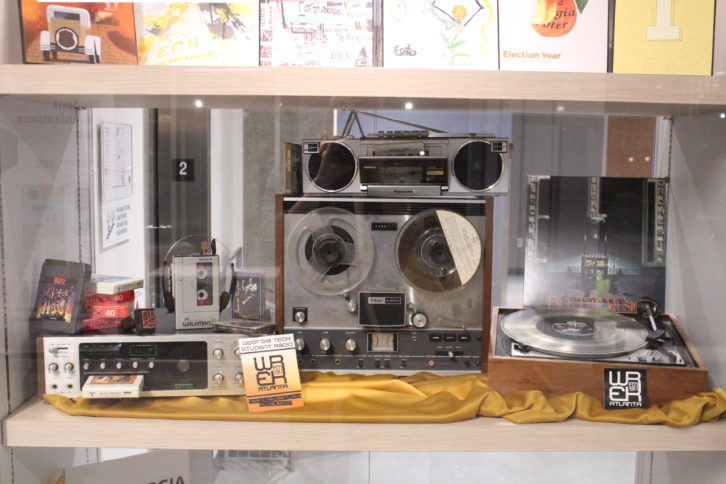
Amid student center construction, WREK was pushed out of its previous home and has since been operating out of a small, 700-square-foot building on campus once used as the ROTC armory — of which no renovations were made to accommodate a functional radio station other than some wiring, sound proofing and security measures for the equipment.
Thankfully, that studio space will soon be a thing of the past.
To hear more about the station’s new digs, Radio World caught up with Donald “Mac” Pitts, the director of student media at Georgia Tech. Pitts oversees six publications at the institute in addition to WREK. At the radio station, he helps handle day-to-day operations and serves as an advisor to the student general manager, who oversees the rest of the student staff.
RW: What was the budget for the new studio space?
Pitts: WREK is not funded by a single institute dollar. WREK gets all of its operational budget from an annual budget process through the Student Government Association at Georgia Tech. Typically, we operate the entire station on $40,000 to $50,000 annually.
With this big move, however, we went to SGA with a request for an additional $85,000 to purchase all new equipment for our new station. Of the request, $55,000 was funded and the remaining balance was picked up by the Division of Student Engagement and Well Being. [It’s] very unusual to receive this type of funding.
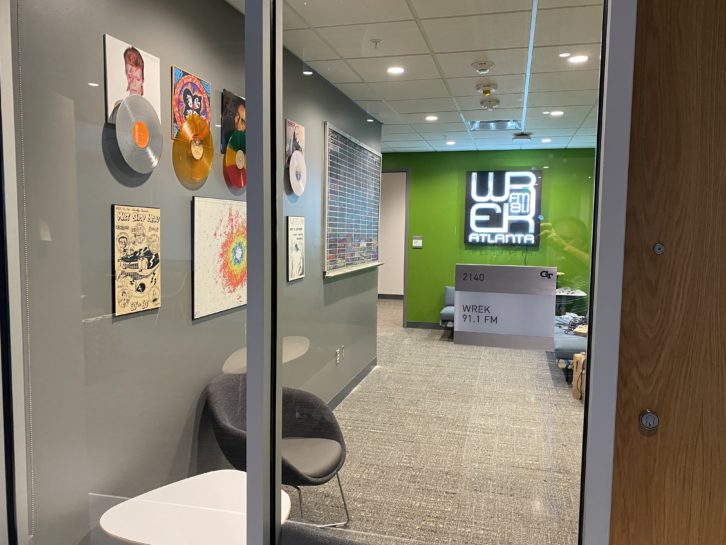
[Sign Up for Radio World’s SmartBrief Newsletter]
RW: What was the timetable?
Pitts: The station started moving in on July 5 and is still in the process of completing the move as of Sept. 28. The production studio is set up and we are broadcasting from there until the on-air studio is complete. The custom, on-air desk and built-in shelving are being installed next Tuesday and we have a goal of being fully operational by Oct. 8 as we are hosting an alumni “Open House” to show off the new station.
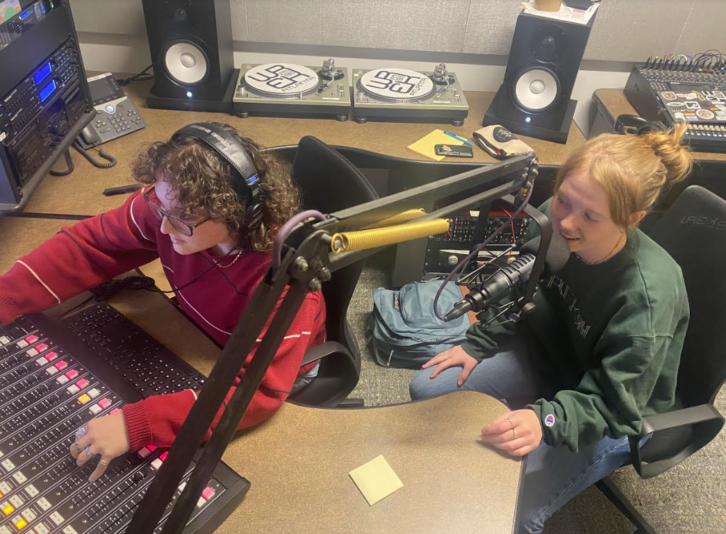
RW: What was the scope of the job?
Pitts: WREK had to move our entire broadcast studio twice. Our first move was to a temporary space, which we called the “swing space,” right at the start of the COVID pandemic. The building we moved to was a 100-year-old building which we had all to ourselves.
Even though this was all taking place during final exams, we were able to pack up our entire studio and move it out before the building (housing our old studio) was demolished. This involved packing our entire music collection, equipment and broadcast furniture.
The swing space building was so old that we had to send some of our music collection to an offsite storage facility, since we were afraid the weight would cave in the floors. We also had to coordinate with the Office of Information Technology here at Georgia Tech to ensure the fiber in the swing space was patched correctly to our broadcasting shack. Since we didn’t have a backup digital AES Audio to Fiber media converter (which we used to get audio to our transmitter shack), we had to run between the buildings so we weren’t off air for too long.
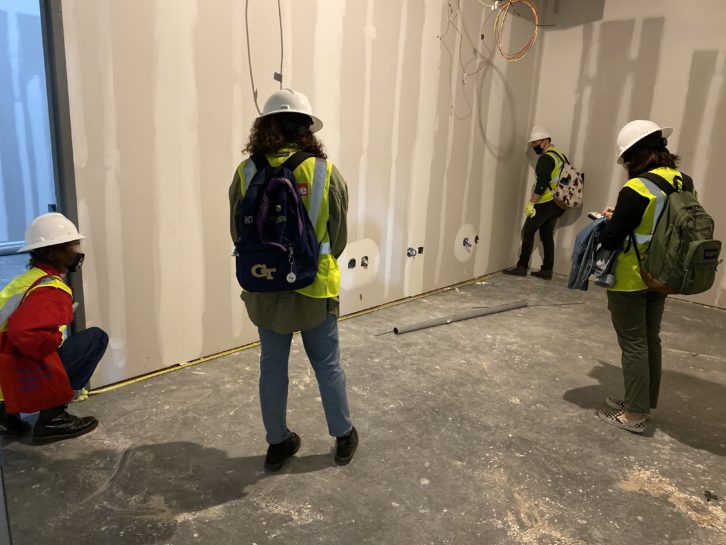
The second move (which is ongoing) was similar. We also had to disassemble and move one of our broadcasting desks as well for one of the studios. In addition to a new air studio broadcasting desk, (which unfortunately still hasn’t arrived due to supply chain issues) we were able to procure funding for new consoles. We decided to go with the Wheatstone AoIP system.
RW: What exactly was redone/upgraded?
Pitts: We are moving into an entirely new building, with a completely redesigned studio layout. It has a lobby, engineering room, storage vault for our music collection, air studio, production studio and sound lock for the studios.
We were able to procure a lot of new gear for this new move. In addition to the new Wheatstone AoIP system, we also were able to get some new monitoring equipment, speakers for our production studio, and signage, including a big neon sign with our logo in the lobby.
We kept a good amount of our gear too. We have speakers in our air studio that were built by an old member a long time ago and have recently been refurbished. We also kept our automation and audio management system, Broadcast Electronics AudioVault. Fun fact, a WREK alumnus was one of the key AudioVault developers.
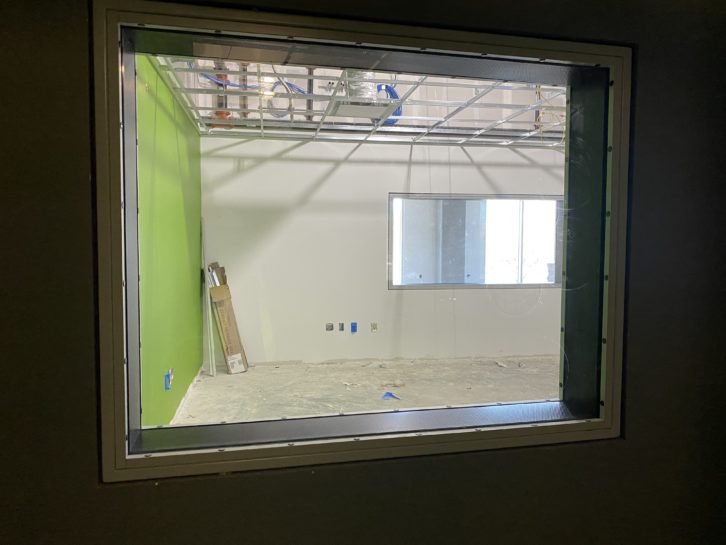
RW: Describe the station’s physical airchain path.
Pitts: WREK’s current 300-foot broadcast tower and transmitter shack has been located on West Campus since 1978.
Prior to 2022, the primary airchain was AES digital audio run over fiber (via a medium converter) to the transmitter shack. After the new studio was installed with Wheatstone AoIP equipment, and an AoIP Blade was installed at the transmitter shack, the WheatNet-IP system across the Georgia Tech network is our primary airchain. We still use the AES digital audio over fiber as backup.
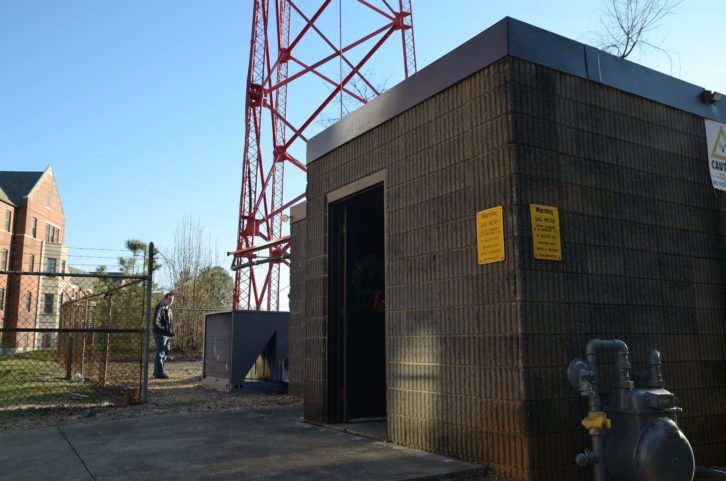
[Check Out More Products at Radio World’s Products Section]
RW: Did you hire a master contractor and/or turnkey company? Who did the install and wiring?
Pitts: The building and infrastructure (electrical, ethernet, fiber, coax, etc.) was handled by contractors as part of the student center construction. Professional movers helped move boxes and furniture from one studio to the other, but hundreds of boxes of CDs, vinyl and engineering equipment were packed and unpacked by Georgia Tech student members of WREK. All of the broadcast furniture, audio equipment, engineering racks and wiring were removed, carried over to the new studio, and installed by the WREK engineering team.
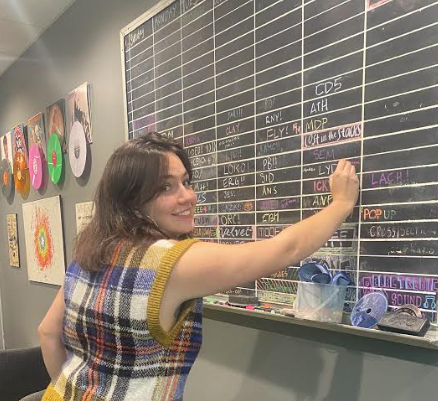
RW: What were the critical equipment decisions that had to be made?
Pitts: One challenge of this move was deciding whether we needed to upgrade our broadcast consoles. We had been using the Harris Impulse broadcast consoles for a few decades and their age was starting to show. We had a hard time finding some of the replacement parts we needed to keep them going. Based on conversations with other college radio stations, we heard great things about the Wheatstone AoIP ecosystem.
With all of this new equipment came the challenge of deciding what we should keep and what to get rid of. It’s tempting for us to hoard all of the equipment for various engineering projects or backups, but in reality we don’t have the space for everything. It’s tough to get rid of some things, especially if they’ve been custom-built by a WREK engineer several decades ago.
[WREK’s new studio space includes two Wheatstone IP-16 Digital Consoles with various Blades and headphone amps; an Inovonics Model 551 HD Modulation Monitor; Electro-Voice RE20 operator mics; Shure guest microphones; a Pioneer DJM-S11 Mixer; and Yamaha HS8 Powered Studio Monitors.]
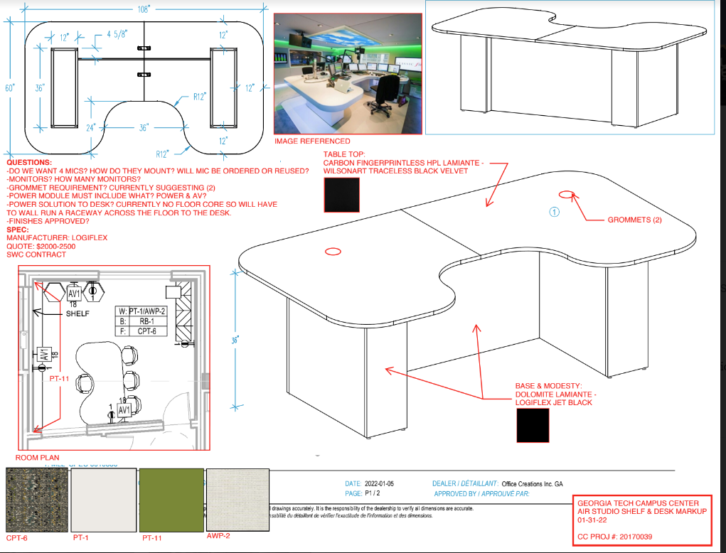
RW: If you were telling a radio engineer about this installation, what interesting insider info would you tell them?
Pitts: At first, we were decently skeptical of the AoIP system and how reliable it would be. Even though we were advised to place the AoIP equipment on an isolated VLAN — one without any enterprise configurations or restrictions — we decided to try to get the equipment working on a private VLAN managed by the Office of Information Technology. This decision came with several benefits.
First, we are able to take advantage of the highly reliable, redundant and fast fiber network that is implemented at Georgia Tech. With this approach, we are able to provide internet access to the VLAN, which makes it easier to manage the devices and keep them updated. [It also allows for] enterprise security and monitoring benefits.
The trickiest part about this was coordinating the multicast requirements of the Wheatstone AoIP system. However, we were able to troubleshoot initial issues and get everything running smoothly.
Learn more about WREK and tune in here.







